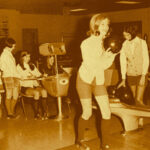Smoking has been banned in many locations. But bans don’t always change behavior or attitude. Smokers continue to challenge bans, lighting up in places where they should not. Nonsmokers continue to be infuriated with what appears to be disregard for bans, for businesses and for rights of nonsmokers to exist in a smoke-free environment. But the negative feelings aren’t just about secondhand smoke. They’re also about cigarette odor, cigarette butts, business income, and curb-appeal.
State Smoking Ban
In the state where I live, smoking is banned in public restaurants, bars, bowling alleys, and bus stops. Smoking is also banned within 25 feet of a door, window, or ventilation system. Having the ban helps somewhat, but businesses have had to post signs to keep smokers away from entrances, out from under eves, or near windows where smoke makes entrance into the facility. A posted sign may state no smoking within 25 feet of the door, but during inclement weather, there’s a disregard for both sign and ban. Smokers light up out of wind and rain, within 25 feet of an entrance.
Smoking Despite Ban
A major hospital I visited recently hires staff to police one of its main entries. Job duties include keeping smokers from lighting-up in the bathrooms and hallway. The entry is located near the bus stop, but the bus stop ban seems of little significance to some smokers. They light-up when they get off the bus or while they are waiting for the bus.
Addiction often calls for a cigarette to smoke before or after a long bus ride. And when it’s raining outside, smokers want to find a place out of the rain to smoke. That place is usually under some roof overhang, near an entrance, or even inside a building.
Smoking outside the door of a business or public establishment is highly frowned upon by business owners and by other patrons. Who wants to wade through secondhand smoke, odors, or cigarette butts to enter or exit a business? Some people would rather take their business elsewhere. This means loss of income for the business, and it devalues the business in terms of curb-appeal.
Making Way for Smokers
One church with lots of smokers in the congregation built a smoking-hut out back for its smokers–complete with benches and walls on three sides. This has helped the church contain the cigarette butts, odor, and secondhand smoke. Smokers no longer smoke under the eves when it’s raining. What’s more, the smoking-hut has also encouraged church growth, by giving visitors and members a place to light-up if needed.
Smoking Bans and Rights
As a nonsmoker, I don’t mind people smoking in designated areas, in their cars, or in their homes. What I do mind is smoking done in non-ventilated public places or in access areas to public places. If I must walk through a smoke cloud, smoke odor, or littered cigarette butts to get to my desired location, someone’s smoking rights have overtaken my nonsmoking rights.
If I don’t want to breathe secondhand smoke, I shouldn’t be made to do so–just because I want to enter or exit a place of business. My clothing starts its day cigarette odor-free, and I should be able to keep it that way. Furthermore, I respect the right of property owners and businesses to exist without cigarette butts littering the entry or smokers puffing on the front walk.
Smokers have every right to smoke in the great outdoors. But they don’t have every right to smoke where there are smoking bans or where they force others to experience their cigarette smoke, cigarette odor, cigarette butts, or loss of income.


